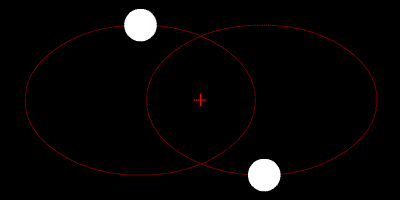- Joined
- Dec 22, 2011
- Messages
- 57
- Reaction score
- 0
True of false: "For an object turning with constant speed in a non-perfectly circular path, the net force will not be exactly perpendicular to its motion"
I thought that this statement is true and that the centripetal acceleration vector always points toward the center of the orbited mass (which would result in acceleration vectors that are not perpendicular to the velocity vector in elliptical paths). EK 1001 Physics #199 implies that the above statement false.
I thought that this statement is true and that the centripetal acceleration vector always points toward the center of the orbited mass (which would result in acceleration vectors that are not perpendicular to the velocity vector in elliptical paths). EK 1001 Physics #199 implies that the above statement false.
Last edited:


